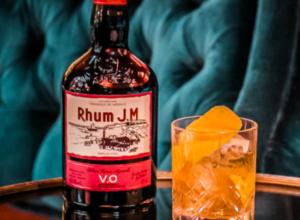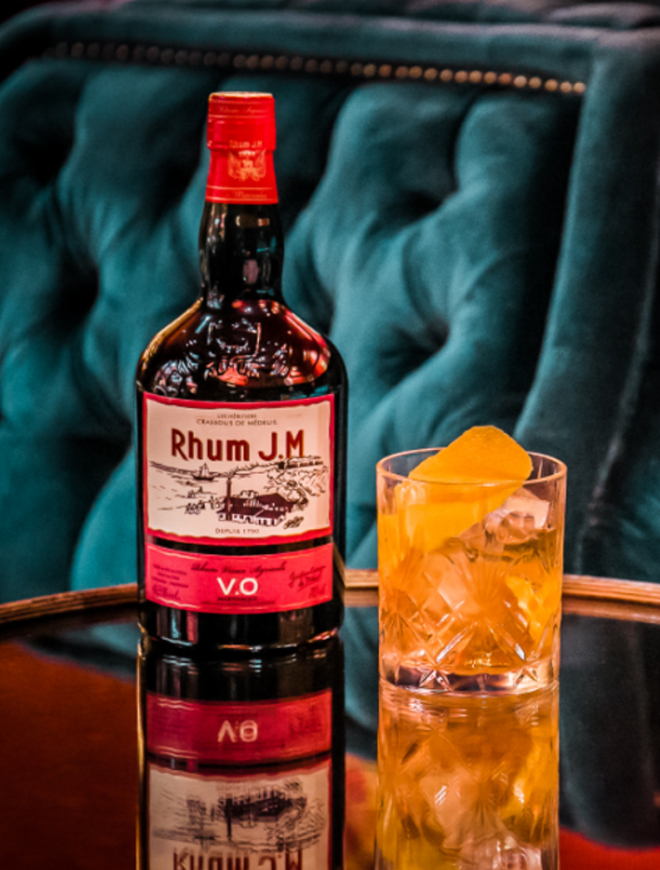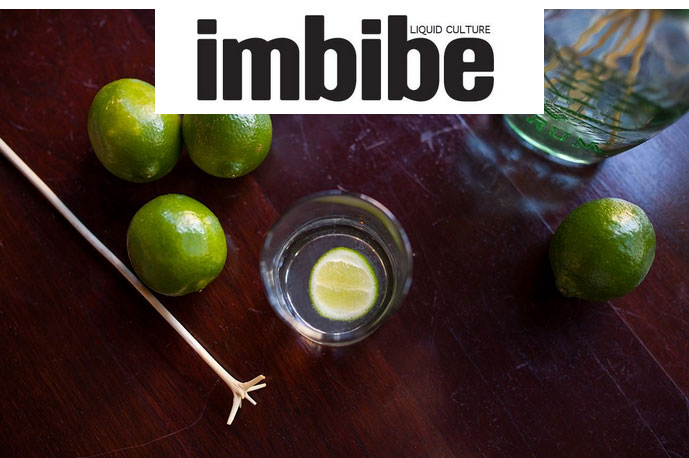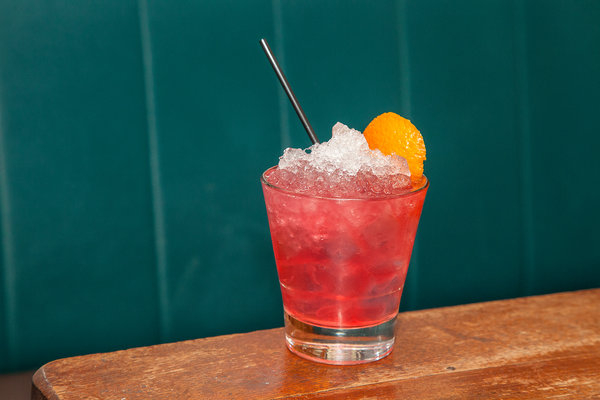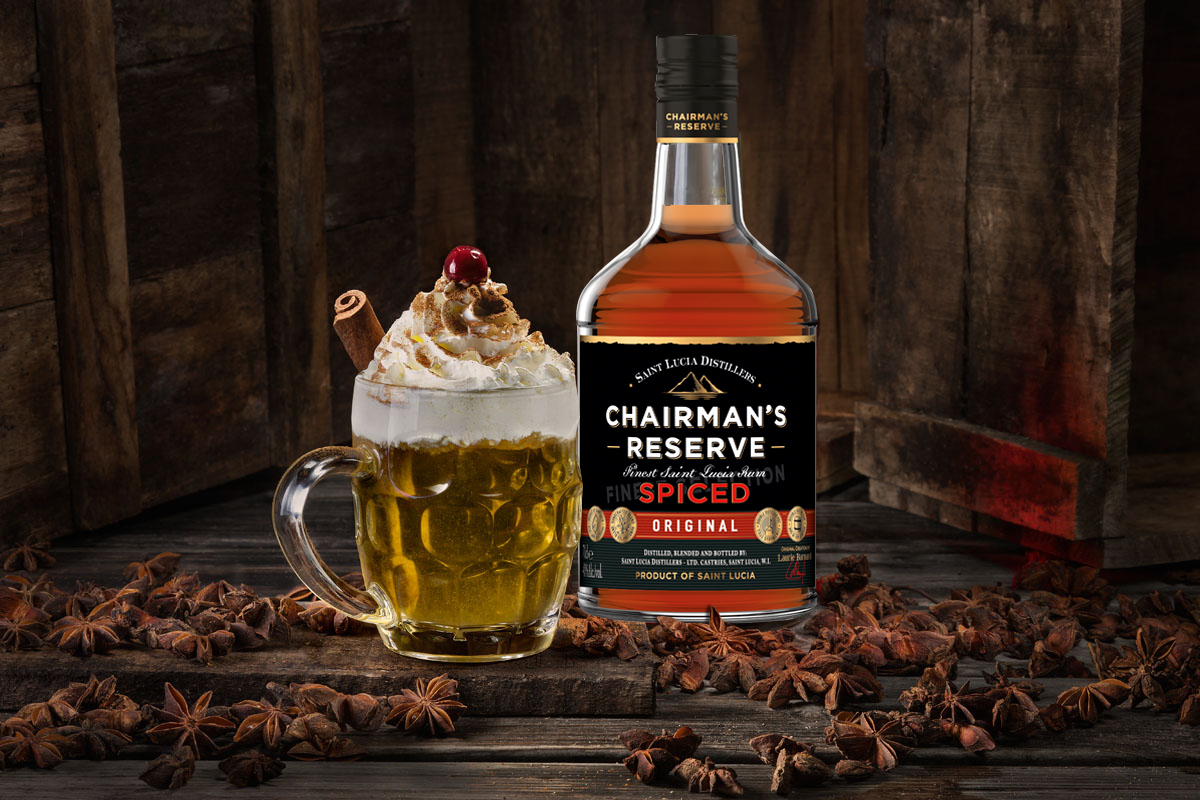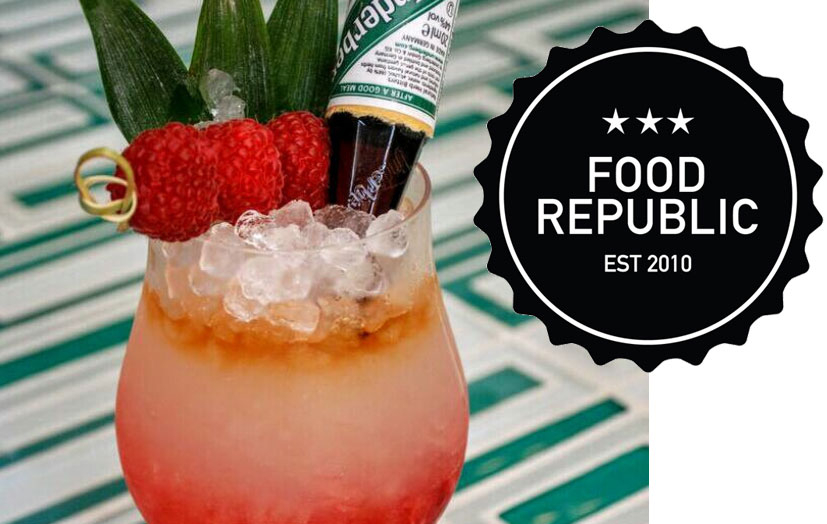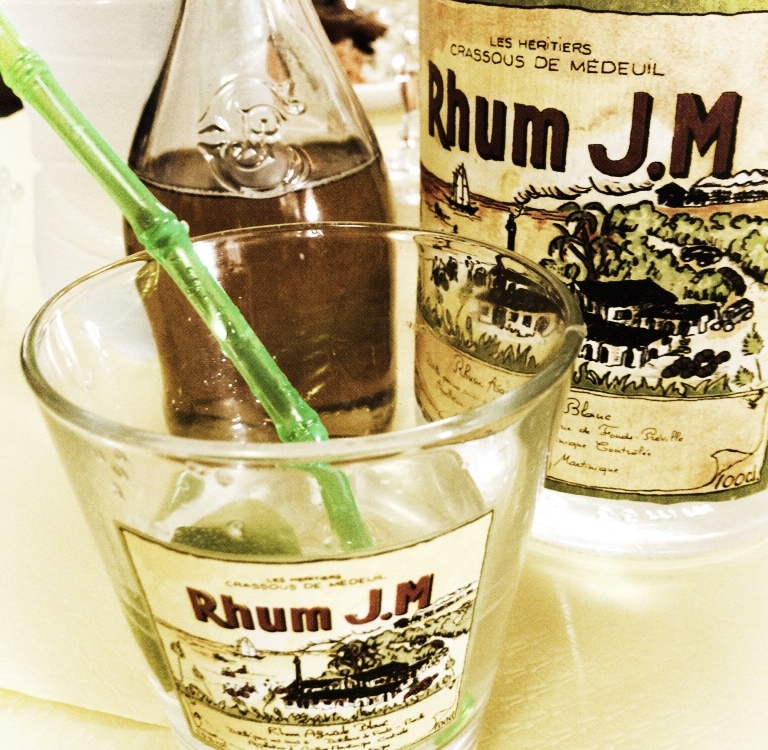
A few weeks ago, Nicholas Feris – rum connoisseur and head of the Rum Collective in Seattle – wrote an article on ‘Ti Punch in Martinique. He was kind enough to allow us to republish it here, in its entirety.
——————————————
| ‘Ti Punch at Restaurant Chez Tante Arlette |
In Martinique, ‘Ti Punch isn’t just a cocktail; it’s a part of daily life. It permeates the social landscape and all who visit. Despite my strong will and objectivity during my stay, I was no exception. Over the course of a week’s time, I carefully watched more than a dozen locals prepare ‘Ti Punches to their liking and enjoyed more than several dozen on my own. But really, who’s counting? This was not a bad thing at all. In fact, I highly recommend this sort of cultural immersion. ‘Ti Punch, pronounced “tee pauncchh” is Creole for Petit Punch, meaning “Small Punch”. The reference in the name to its size matters little, particularly when pouring from bottles reading 50% or 55% ABV. Wherever you dine or drink on this French island, ‘Ti Punch is always on the menu. Typically served as an apértif, you may hear the server ask, “Blanc or Vieux?”, upon ordering. Um…both?! It is also custom to serve you the bottle of rhum with the other ingredients on the side. Oh, and the empty glass next to it is for you to prepare it yourself. If I learned one thing about this cocktail, its variations are limitless. Sirop de Canne or raw sugar? Fancy it more sweet or more bitter? More rhum or less rhum? What about ice? Yep, all up to you. This cocktail almost holds a Bruce Lee type persona; having a form that is formless, adapted to fit each personal style with practice. One thing is certain, it is prepared to suit one’s own taste and mood. For those not yet familiar with this simple, yet delicate concoction read on….
Chacun prépare sa propre mort
Dosage, however, is the critical part!
| ‘Ti Punch at Restaurant Le Petibonum |
‘Ti Punch is simple. It is built of Rhum Agricole, Sirop de Canne or raw sugar, and lime. Simple as 1, 2, 3, right? Note to my proofreaders, rhum is not a typo. It is the French word for rum; same word and meaning, just the extra h. Got it? Let’s move on. If you are familiar with classic cocktail ingredients, it resembles a Daiquiri. This is the point where the similarities end and the beautiful differences begin. Rhum Agricole is the first point of distinction. Agricole in French is defined as “agricultural” and this style of rhum is made from sugar cane juice. To contrast, rhum made from molasses is labeled Rhum Industriel. As far as ‘Ti Punch is concerned, only Rhum Agricole will do. Today, rhum from Martinique, in almost all cases (with exception of Gran Fond Galion) is Rhum Agricole, which must be made from sugar cane juice to be labeled with the Apellation d’Origine Contrôlée (AOC) decree. Manufacturers of Rhum Agricole must also adhere to very specific rules that govern the sugar cane cultivation and rhum producing processes including fermentation, distillation and aging. Suffice to say, the AOC label indicates not only Martinique origin, but that certain quality standards have been met, functioning similar to the EU’s Protected Designation of Origin (PDO). More importantly, AOC regulations facilitate the evolution of distinctly unique aromas and flavors for which Rhum Agricoles are known. Next up on the recipe is Sirop de Canne. No, this is not simple syrup (refined sugar and water). Consistent with the source of Rhum Agricole, Sirop de Canne is simply fresh pressed sugar cane juice, slowly reduced to yield a thicker, higher sugar concentration syrup. Raw or less refined sugar is sometimes used as you will see in the video below. Finally, the lime is cut disc thin with an almost proportional amount of lime peel to pulp to impart a balance of both the aromatic oils in the lime zest as well its juice into the libation. Simple recipes using quality ingredients often make the best cocktails when mixed right.
‘Ti Punch is delicate. Utilizing the freshest sugar cane juice permits aromas and flavors of the sugar cane’s natural character to come through in the final product. If you have had the opportunity to get acquainted with that beautiful floral, earthy and vegetal sugar cane goodness Rhum Agricole offers, then you get it. If not, you need to get on it! The delicate part of making this cocktail is taking care not to overly sweeten or acidify the cocktail so as to prevent it from dominating these delicate notes of the Rhum Agricole. Additionally, all Rhum Agricoles are not the same; each displays its own unique character. For example, your proportions of lime and Sirop de Canne or raw sugar may need to be adjusted when using La Mauny vs. St. James vs. Dillon and so on. If you are using rhum vieux (aged rhum), similar changes may be necessary depending on your palate. Trying out different brands’ expressions is half the fun. Plus, there are so many beautiful Rhum Agricoles to choose from! Last but not least, this cocktail is stirred with a swizzle stick a.k.a., Le Bois LéLé. This naturally occuring Caribbean stirring utensil comes from the branches of none other than the SwizzleStick Tree (Quararibea Turbinata). Serious!! So, no shaker required here folks.
Absolutely Rhumtastic!!
feat. Emmanuel Becheau
| ‘Ti Punch “Rude” at Habitation Clément |
Some may like their ‘Ti Punch sweeter, other may fancy it more bitter; to each their own. For me, after preparing my own death countless times (still need more practice obviously!), the description of how one woman likes her ‘Ti Punch rings out immortal. I won’t mention names, Celia Sainville, Directeur of Habitation Clément, but upon asking how she prefers her ‘Ti Punch, she responded, I like it “Rude…without much sirop or lime”. Rhumlove at its best!!



